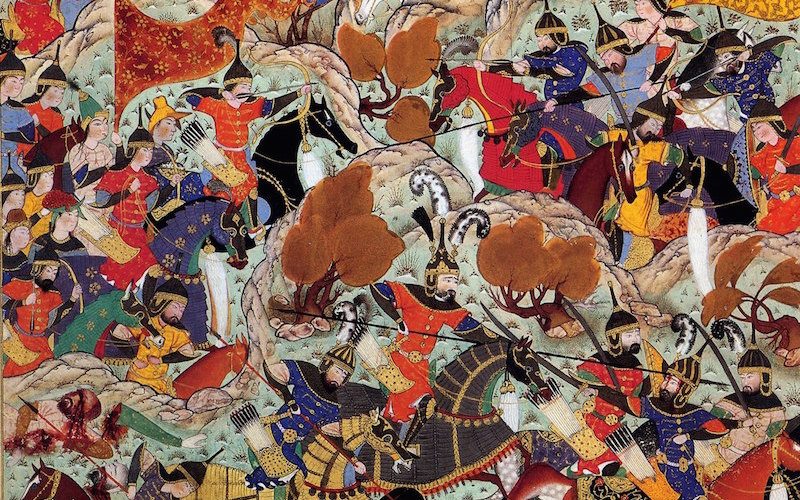Conquests of Tamerlane
Date: 1618 – 1683
Location: Middle East, India, Central Asia, Russia
Estimated casualties: 17,000,000 – 20,000,000
Even as the Qing Dynasty developed, another dynasty was also gaining ground in central Asia and parts of India. Timur or Tamerlane (Persian: “Timur the Lame”) was the founder and leader of the Timurid Dynasty, which lasted until 1506. Tamerlane had established himself as a great military leader in 1358. He admired the leadership style of Genghis Khan and even claimed to be his descendent (although this has never been proven). His forces did have a marked resemblance to those that Genghis Khan commanded.
He was the son of a Barlas tribal leader, and he became a Sunni Muslim. He often attacked infidel lands or land belong to “erring” Muslims using the pretext of Islam, but that was usually just to justify the attack and not the real reason. He started his reign by conquering rival Turkistan forces and controlled Turkistan and Samarkand by 1370.
He was well-known for having elaborate and expensive taste, and he generally conquered other lands just so he would have more people to tax. He spared artists and craftsmen from conquered peoples so that they could design and build luxurious structures in the newly acquired lands. He continued to move west, taking everything in his path until he was met by Bayezi I, the Ottoman sultan in 1402. Undeterred, he besieged Ankara and defeated even the stalwart sultan. Most historians believe that if he hadn’t died, Tamerlane would have attempted to take China as well.
Tamerlane is perhaps the most well-known for his cruelty and brutality. He often ordered massacres of his enemies. For example, in Delhi he killed 80,000 people and built pyramids of their skulls in honor of his victory. Regardless, he is often applauded for uniting the Muslim world.
Expand your knowledge universe in just 5 minutes a day via bite-sized email courses.
Share with friends:

